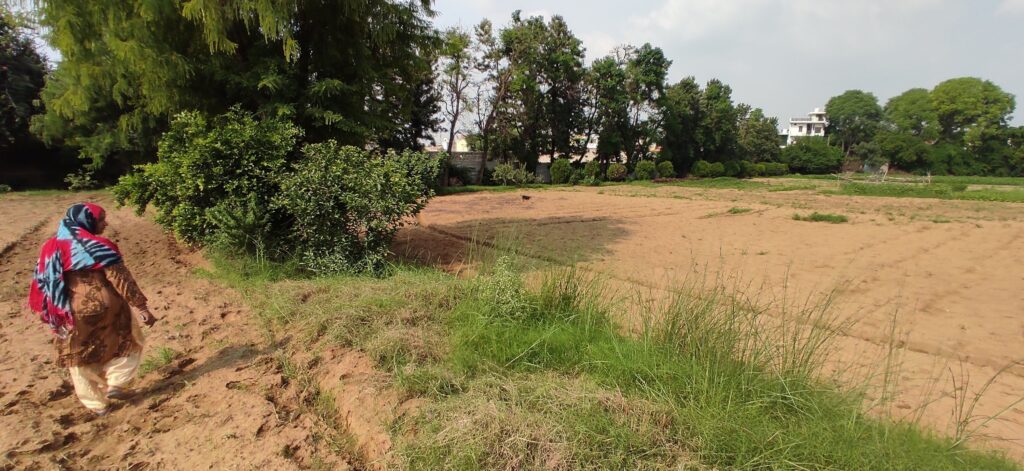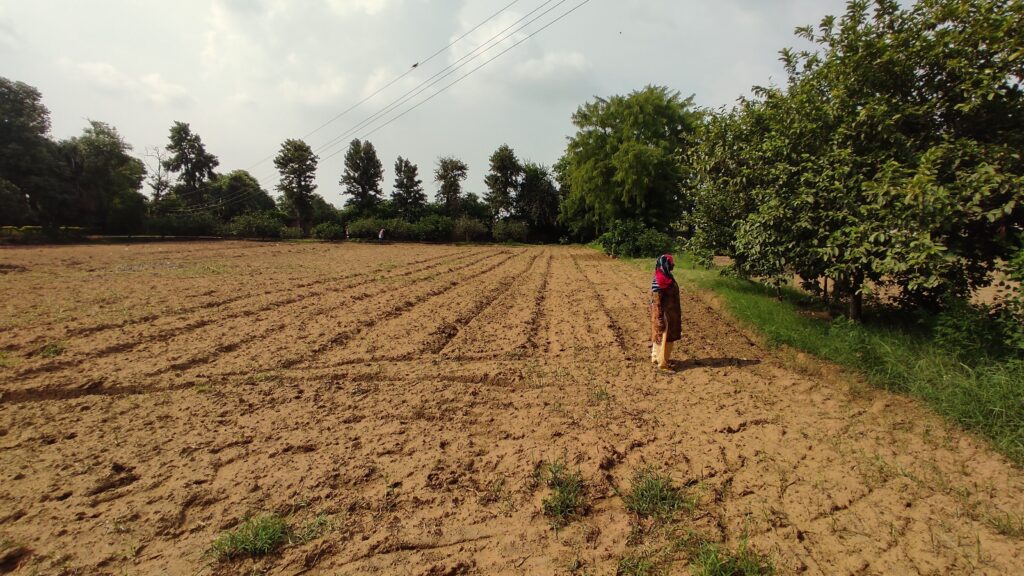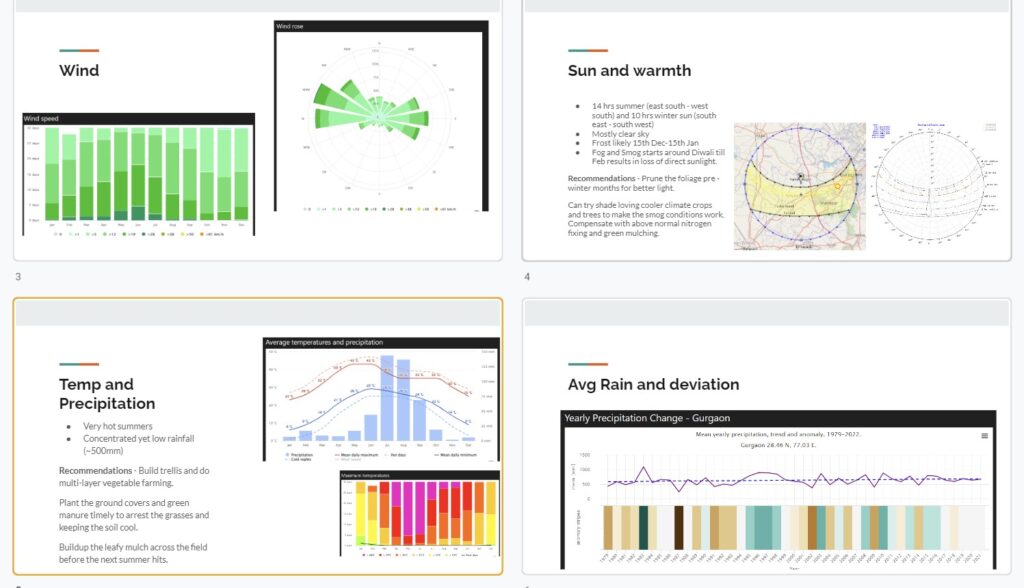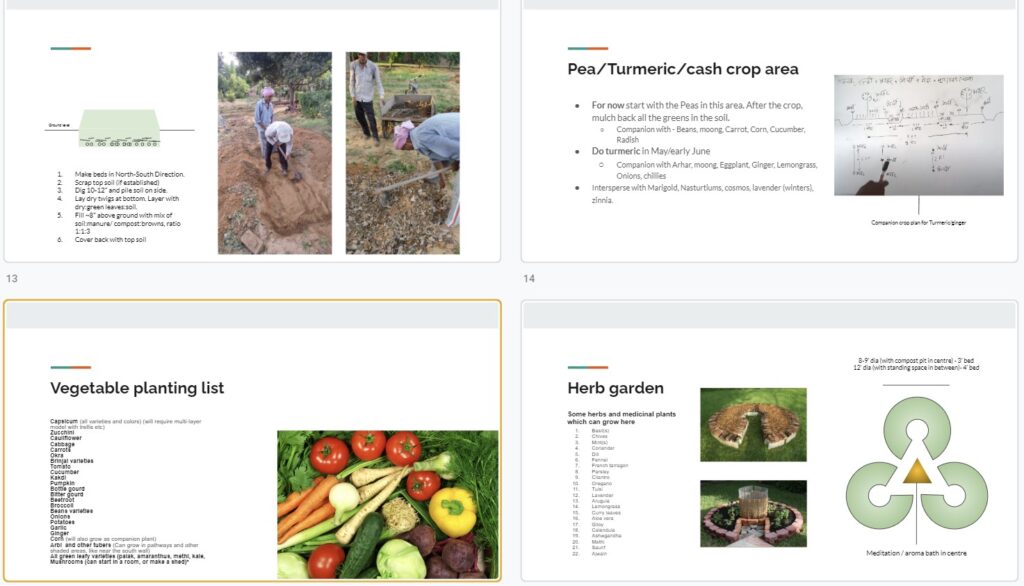Designing the JB Farm – Garhi Harsaru, Haryana

Project introduction: JB’s 4-acre farm faced a number of challenges, including highly depleted soil, scarce water resources, and a harsh climate. But with the use of permaculture principles, we were able to turn it into a thriving operation.
The custodian’s brief and existing challenges: The custodian of the farm had a clear vision for the property: to make it profitable, chemical-free, and able to provide year-round food for a large group of people. But with a distance between the custodian’s house and their farm, unskilled workers with a chemical farming mindset, and a variety of environmental challenges, achieving this vision seemed daunting.
Design solution: We started by conducting a thorough study of the farm’s topography and wild energies before starting the design process. We calculated the land required for the primary group’s food needs and assessed the land required to grow cash crops. We then designed value-adding systems for generating profits through processing, instead of just selling raw crops. To reduce pest impact and water requirements, while also improving climate resilience, we designed an extensive companion and mixed cropping plan. This ensures better availability of food throughout the year.
Creative land-use to build a strong and self-sustaining ecosystem: We also reallocated land for its intended use by conducting a thorough study of topography and wild energies. Through this process, we were able to free up almost 40% of the land to grow a perennial functional forest. This forest provides fruits and herbs that can be sold, wood for a planned woodworking workshop, and a lot of organic matter that helps the soil. Additionally, we are planting over a thousand nitrogen fixing Moringa and Sesbania trees along the pathways. These trees not only improve the soil, but also provide a solution for malnutrition problems, especially in women and children. Sharing these as gifts can also help create stronger bonds with the neighbors.
The timeline: The farm design was completed in October 2022, with land prepared and planting done for the winter vegetables. The tree plantation will start once spring sets in – primarily after the first monsoon showers in June end. With permaculture methods, this farm has the potential to be not only productive and profitable, but also to improve the value of the land, water table, and living assets for everyone involved.
This farm design project is a great example of how permaculture principles can be used to overcome environmental challenges and create a sustainable, profitable farm.

Below are some more images sharing images of the land and the design process. Click on one of them for a better enlarged view!











Leave a Reply